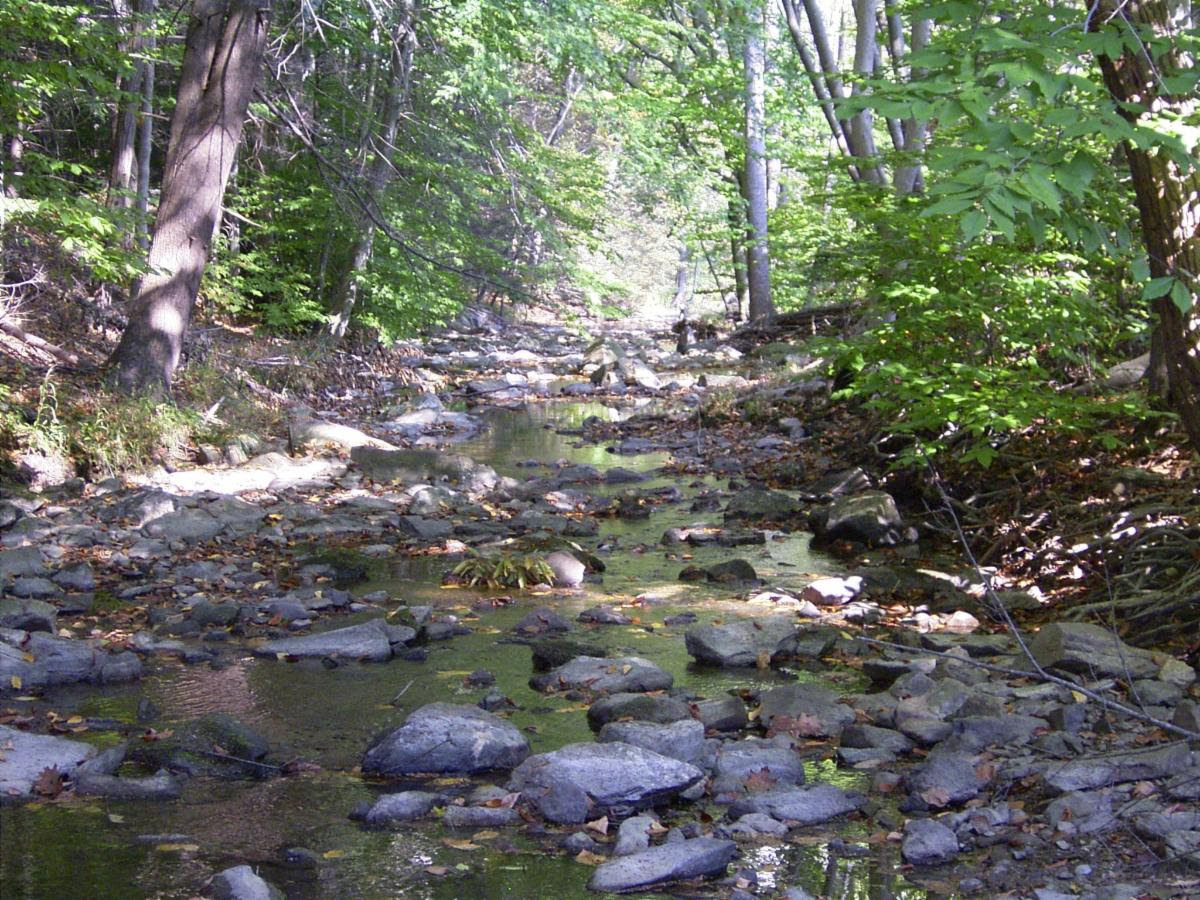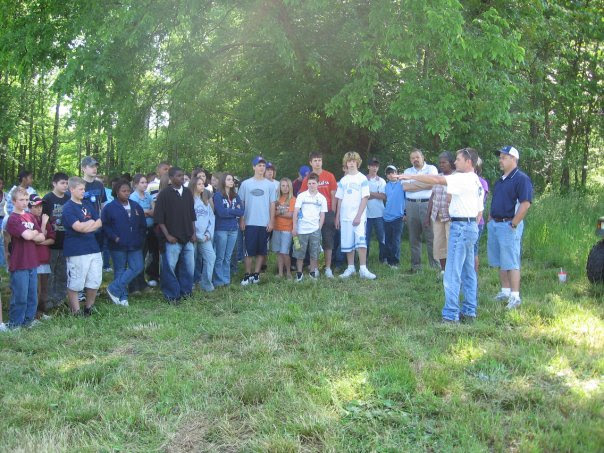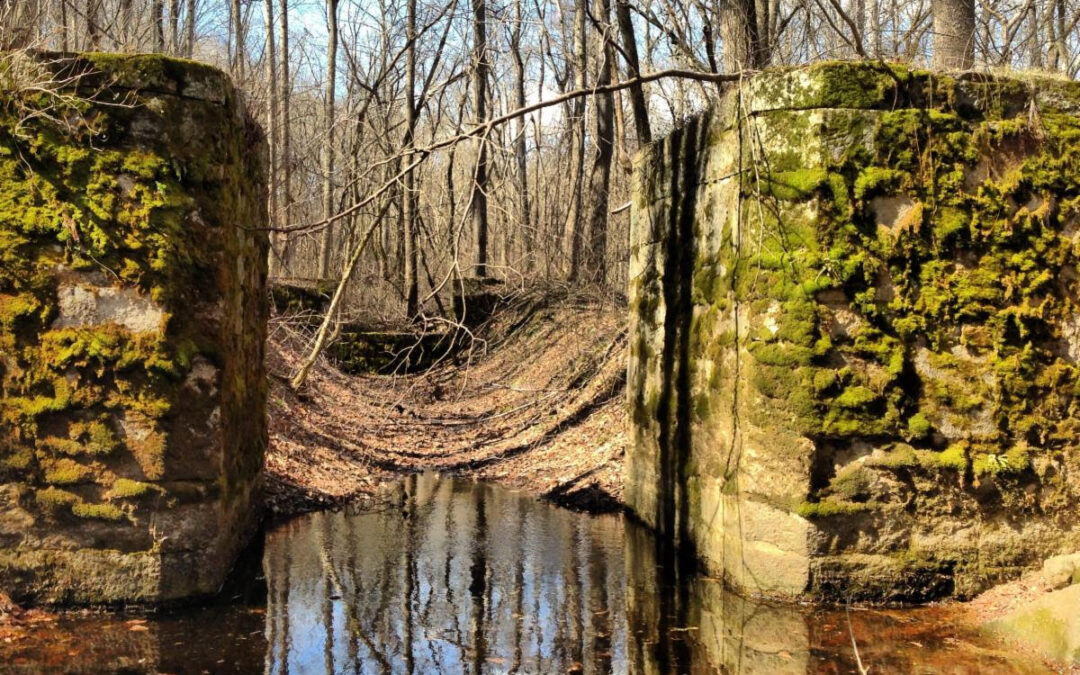Ellis Mine Track: Historic canal locks on the Ellis mine track. 1,219 acres of working forest conserved in the Upper Rappahannock River Valley, VA in 2015.
Photo credit: Jamie Craig
Written by Katie Brownson, USFS Liaison to the Chesapeake Bay Program, US Forest Service
The US Forest Service recently announced the award of $188 million to conserve 245,000 acres of forestland nationwide through the Forest Legacy Program. The program provides funding to protect privately owned forest lands through conservation easements or land purchases. The next round of funding opportunities is now open through September 8th.
Three million acres of forest land have been conserved across the country over the history of the program. Since the program’s inception in 1990, the Forest Service has worked in partnership with state agencies to help minimize the loss of forests to development, ensuring these forests can continue to provide clean air and water, habitat, forest products and more.
The Forest Legacy Program presents a significant opportunity to advance forest conservation in the Chesapeake Bay watershed. Forests are critical for maintaining and improving water quality in the watershed, while providing numerous other benefits to ecosystems and communities. However, the latest land use datasets show that we lost over 86,000 acres of forest to development between 2013 and 2018. Permanent land conservation through programs like Forest Legacy will help minimize future losses of Chesapeake forests to development.

Tom’s Creek: Tree Farm #1 Project in Hamiltonban Township, PA. 1,466 acres adjacent to the Michaux State Forest conserved in 2010. Photo credit: Sidney Kuhn
The most recent round of funded projects includes two projects within the Chesapeake Bay watershed. In Virginia, the Southern Shenandoah Borderland Projects was awarded over $7 million to conserve 4,364 acres of scenic lands adjacent to Shenandoah National Park. In West Virginia, the South Fork Lost River Phase 4 project was awarded $1.5 million to conserve 1,743 acres in the headwaters of the Potomac River, helping protect the drinking water supply for the Washington, D.C. metro area.

Youth outreach on forest conservation by Ward Burton Wildlife Foundation on Forest Legacy land in Virginia.
Historically, Forest Legacy projects (FLP) have been funded through the Land and Water Conservation Fund (LWCF). The Inflation Reduction Act (IRA) provided an additional investment of $700 million over ten years to increase forestland conservation through the program.
The annual request for new Forest Legacy projects is now open. The LWCF FY25 FLP Call Letter was issued on April 21, 2023, and includes scoring criteria and instructions for submitting a project. September 8th, 2023, is an important deadline for submitting a project to the USFS. Proposed projects will then be reviewed and selected by a National Review Panel in November 2023.
There is a separate Call Letter for FY24 IRA FLP projects issued on June 29, 2023 that includes scoring criteria and instructions for submitting projects. Proposed projects can be submitted in either of two submission rounds—one in the winter (December 11, 2023) and one next summer (May 20, 2024), and projects will be evaluated by a National Review Panel. In FY24, $250 million in IRA funding will be available. Three project types will be considered for this IRA funding:
- Large Landscape Projects: Large-scale, high-impact opportunities with exceptional economic, social and environmental benefits and high strategic importance in a priority landscape (up to $50 million per project)
- State-Tribal Partnership Projects: States work in partnership with tribes to identify and conserve lands with high importance and significant benefits for those tribes (up to $50 million per project)
- Strategic Small-Tract Projects. Support conservation of strategic inholdings or adjacent properties already conserved (up to $1.5 M per tract per landowner)
The full Call Letters and Project Scoring Guidance for LWCF and IRA projects can be found on the Forest Legacy Program website.
All Forest Legacy projects must be within state-designated Forest Legacy Areas based on their state Forest Action Plans. Organizations interested in working with their state agency to develop or submit a project to conserve private forestland should get in touch with their state’s Forest Legacy Program Coordinator:
- Delaware: Chris Miller ([email protected])
- Maryland: Daniel Root ([email protected])
- New York: Jeff Mapes ([email protected])
- Pennsylvania: Tom Stahl ([email protected])
- Virginia: Karl Didier ([email protected])
- West Virginia: John Rowe ([email protected])
Photo Credit:
- Jamie Craig
- Sidney Kuhn
- WBWF
Lightning Update is a regular communication of the Chesapeake Conservation Partnership. Any opinions expressed are those of the authors and do not necessarily reflect positions of the Partnership or member organizations.
To share a success story, news, or important event, send your information to:
Support for the Chesapeake Conservation Partnership is provided by:
National Park Service Chesapeake
EPA Chesapeake Bay Program
USDA Forest Service
Pennsylvania Department of Conservation & Natural Resources
Maryland Department of Natural Resources
Virginia Outdoors Foundation
US Fish & Wildlife Service
Chesapeake Conservancy
The Chesapeake Conservation Partnership is co-convened by:




